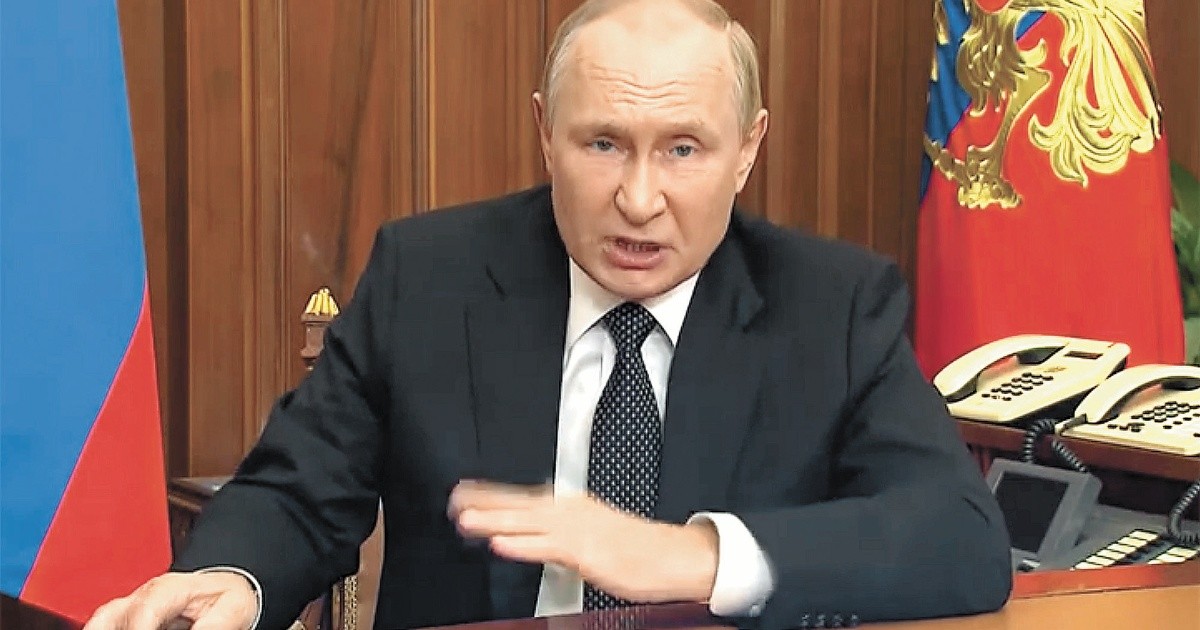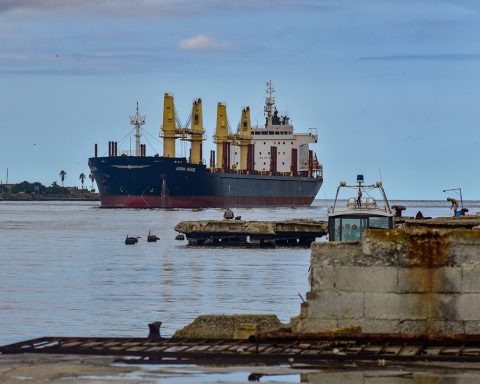Russian President Vladimir Putin’s veiled threat to use nuclear weapons in Ukraine in case Russia’s “territorial integrity” is threatened has sparked intense discussions in the West about a possible response.
“When the territorial integrity of our country is threatened, we will certainly use all means at our disposal to protect Russia and our people. This is not a bluff,” Putin said.
“Those who try to blackmail us with nuclear weapons should know that the wind can turn against them,” he added.
However, many analysts are not convinced that Putin wants to be the first to unleash nuclear attacks since the United States dropped atomic bombs on Japan in 1945.
AFP spoke to various experts and officials about possible scenarios that could arise should Russia carry out a nuclear attack.
What would a Russian nuclear attack look like?
Analysts say Moscow is likely to deploy one or more “tactical” nuclear weapons.
These are small atomic weapons with an explosive power ranging from 0.3 to 100 kilotons, compared to the 1.2 megatons of the largest US strategic nuclear warhead or the 58-megaton bomb tested by Russia in 1961.
Tactical bombs are designed to have limited impact on the battlefield, while strategic weapons are designed to fight and win all-out wars.
However, the terms “small” and “limited” are relative. The atomic bomb that the United States dropped on Hiroshima in 1945, with devastating effect, had a power of 15 kilotons.
What targets would Moscow aim at?
Experts believe that Russia’s aim in using tactical nuclear weapons would be to provoke fear in order to force Ukraine to surrender or submit to negotiations, thus dividing Western countries that support the war.
Mark Cancian, a military expert with the CSIS international security program in Washington, said Russia is unlikely to use its nuclear weapons on the front lines.
Capturing some 20 miles of territory could require about 20 small nuclear bombs, a small step forward compared with the high risk of radioactive fallout. “Using one would not be enough,” says Cancian.
But Moscow could avoid multiple casualties by detonating a nuclear bomb over water or by exploding one high above Ukraine to generate an electromagnetic pulse that would bring down electronic equipment.
Or it could opt for further destruction and death by attacking Ukrainian military bases, or hitting an urban center like kyiv, inflicting massive casualties and possibly killing the country’s political leadership.
Such scenarios “would likely be designed to split the NATO alliance and the global consensus against Putin,” Jon Wolfsthal, a former White House adviser and nuclear expert, wrote in Substack.
But “it is not clear whether this could be successful, and could easily be seen as both an act of desperation and determination,” he explained.
Would the West respond with nuclear warheads?
The West has remained ambiguous about its response to a possible tactical nuclear attack from Russia, and the options are complicated.
The United States and NATO do not want to appear weak in the face of an implied nuclear threat. But they also want to prevent the war in Ukraine, a country that is not a member of the Atlantic alliance, from turning into a larger and more devastating global nuclear war.
Experts believe that the West may have no choice but to respond, and that response could come from NATO as a bloc, rather than a response from the United States alone.
But any response should “both ensure that Putin’s military situation is not improved by such an attack, and that his political, economic and military position suffer as a result,” Wolfsthal said.
The United States has positioned a hundred of its own tactical nuclear weapons in NATO countries and could respond to the same level against Russian forces.
This would show determination and remind Moscow of the danger of its actions, according to Matthew Kroenig of the Atlantic Council. However, “this may also provoke a Russian nuclear retaliation, raising the risk of further nuclear exchange and humanitarian disaster.”
Another risk is that some NATO members will reject a nuclear response, serving Putin’s goals of weakening the alliance.
Give Ukraine the ability to attack Russia?
Responding to a Russian nuclear attack in a more conventional way militarily or diplomatically, and providing Ukraine with more lethal weapons to attack Russia may be more effective, some experts say.
“A Russian nuclear use could be a start to convince countries that have so far been reluctant – such as India and possibly China – to participate in the escalation of sanctions,” says Kroenig.
In addition, the United States could offer Ukraine NATO aircraft, Patriot anti-missile and THAAD anti-missile batteries, as well as long-range ATACMS missiles that could be used by the Ukrainians to hit Russia inside its territory.
“Whatever restrictions we have (on arms provided to Ukrainian forces), and I think there are several, I think they all need to be removed,” Cancian says.















